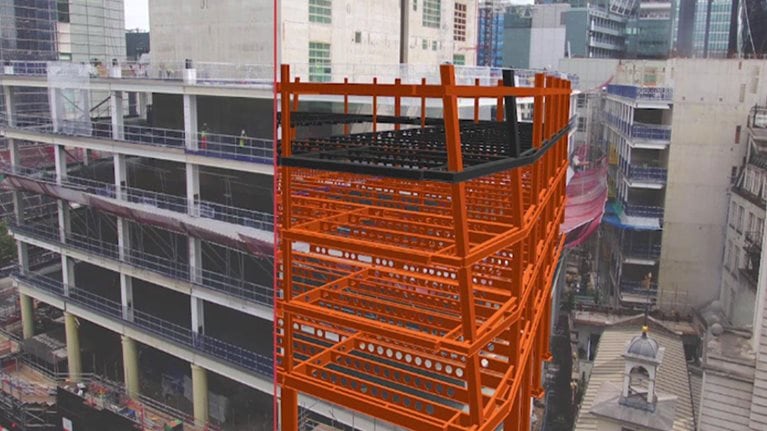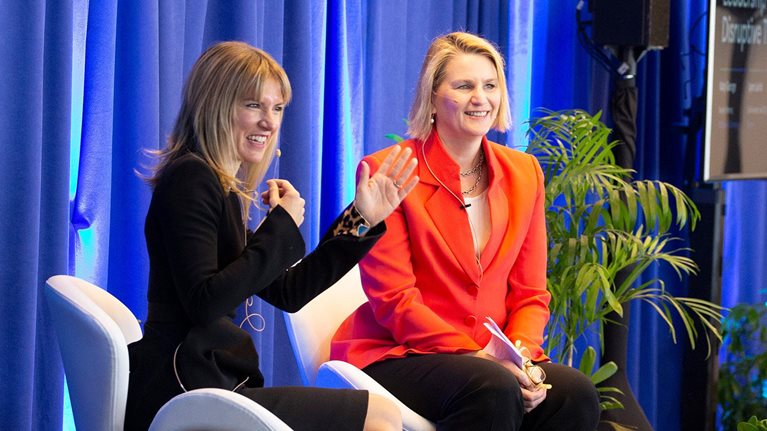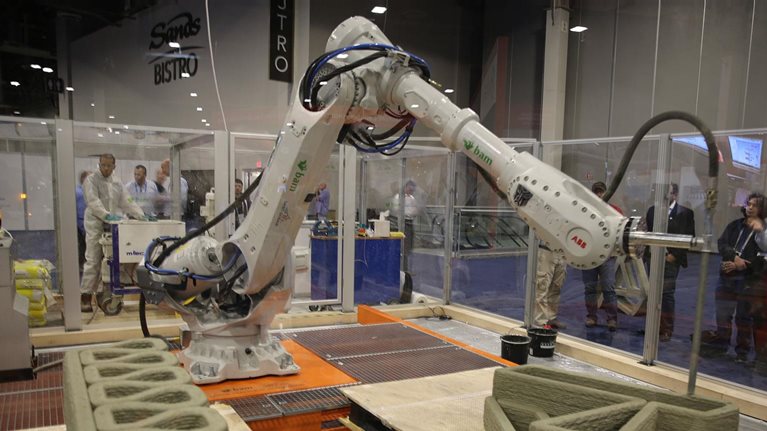The energy, resources, and infrastructure (ER&I) sectors have a gender representation problem.1 Our research finds that women are underrepresented at every level of ER&I employment, from entry-level positions to the C-suite—and at a wider margin than corporate America overall.
Stay current on your favorite topics
The reasons are varied and deeply ingrained, but several challenges rise to the fore. To start, women aren’t getting into the employment pipeline from the beginning; just one-third of entry-level hires are women. Women in ER&I report more workplace incivility than women overall—and far more than men. And being the only woman in the room is still a common experience in ER&I.
Regardless of the challenges, women in ER&I have ambitions to reach the top—not only to contribute to the company’s success but also to act as role models and influence workplace culture. But their efforts alone won’t be enough. Helping more women enter and stay in ER&I will take a long-term commitment from individual companies and the industry at large. For companies willing to face the primary challenges head on, the path forward is clear: enlarge the entry-level candidate pool, ensure hiring and promotions are fair, make the “only” experience rare, and offer robust networks and support systems.
The current state of women in energy, resources, and infrastructure
With every step up the North American corporate ladder, men outnumber women by a progressively larger margin that by the C-suite reaches five men for one woman. The good news, according to McKinsey’s annual Women in the Workplace report (conducted in partnership with LeanIn.org), is that companies across industries are making progress— whether it be promoting more women to the C-suite, offering flexible work options, or holding senior leaders accountable for gender diversity. These developments represent progress not only for gender parity but also for corporate performance; separate McKinsey research has found that gender-diverse companies are 21 percent more likely to outperform the competition.2
We reviewed pipeline data from 30 companies and survey data from 6,000 respondents in the ER&I sectors, including oil and gas, utilities, engineering, and energy and basic materials—and the numbers confirm what many have anecdotally pointed to for years. Stated simply, women are underrepresented at every rung of the ER&I corporate ladder by a wider margin than industries overall (Exhibit 1). And like industries overall, the ER&I workforce loses disproportionate numbers of women early in the pipeline—specifically the first promotion to manager, during which the share of women promoted in ER&I is 28 percent versus 43 percent for women overall.

A bright spot, according to the data, is that the ER&I pipeline is less “leaky” than the overall pipeline. This means that although women are vastly outnumbered by men at all levels, a higher proportion of women in ER&I than women overall stick it out to the top. Moreover, our research finds that the share of promotions of women in ER&I from SVP to the C-suite is 42 percent, compared with 31 percent in other industries, and the share of hiring women at the C-suite level is higher as well (36 percent versus 31 percent in other industries). These findings point to the efforts of ER&I companies to improve the representation of women at the top as well as the ambition and perseverance of women in the industry.
Indeed, the survey found that women in ER&I are just as likely as women in other industries to say they want to reach the top (both at 33 percent). However, their reasons differ. Women in ER&I are slightly more likely than women overall to say they want to reach the top to be a role model (45 percent versus 42 percent), impact the success of the company (63 percent versus 59 percent), and have an opportunity to influence the culture of the workplace (52 percent versus 46 percent) (Exhibit 2).

Would you like to learn more about our Capital Projects & Infrastructure Practice?
Women face challenges specific to the energy, resources, and infrastructure sectors
The challenges start at the beginning of the pipeline, as just 35 percent of entry-level hires in ER&I are women (compared with 48 percent in corporate North America overall). An underlying cause could be that, according to the National Girls Collaborative Project, women make up just 28 percent of the science and engineering workforce3—fields that can be precursors to employment in ER&I sectors such as engineering, manufacturing, and construction. Many of the women that do study science, technology, engineering, and math (STEM) fields are drawn to other industries, such as healthcare.4 Furthermore, a lack of hiring practices that target women candidates as well as the perceived experience of women in ER&I based on existing representation may also affect the number of women entering the industry.
Once women are in the room, the challenges continue. According to the survey, women in ER&I report more incivility than women overall—and far more than men (Exhibit 3). Four in ten women in ER&I said they’ve felt pressure to provide more evidence of their competence than others do and have had their judgment questioned in their area of expertise. These experiences, along with more blatant aggressions such as being addressed in a less-than-professional way, are indicative of company cultures that create barriers to women’s advancement. Even more concerning, when asked if they’ve experienced any form of sexual harassment, 43 percent of women in ER&I responded in the affirmative versus 35 percent of women overall.

Furthermore, 33 percent of women in ER&I report often being the only person of their gender in the room—compared with 19 percent of women overall and less than 10 percent of men (Exhibit 4). According to Women in the Workplace research, being an “only” can compound the negative experiences of feeling on guard and an increased pressure to perform.

Finally, climbing the corporate ladder can involve a level of politics that some women find off-putting. Women in ER&I who do not want to be top executives say that “too much politics” and a need to “act in ways that are not consistent with who they are” are the top reasons (34 percent of women in ER&I versus 30 percent women overall and 17 percent of women in ER&I versus 14 percent of women overall, respectively). According to the survey, 30 percent of women in ER&I (and 24 percent of women overall) believe their gender has played a role in missing out on a raise, a promotion, or a chance to get ahead, compared with 10 percent of men in ER&I (8 percent overall). When women see their workplace as less fair, they are understandably more likely to leave the industry— or the workplace altogether. Furthermore, women of color feel these challenges to an even higher degree (see sidebar, “Women of color face even greater barriers”).
Making change in energy, resources, and infrastructure
As noted in the 2018 Woman in the Workplace report, “To achieve equality, companies must turn good intentions into concrete actions.”5 In ER&I, two priorities emerge that directly address the challenges that are heightened for women in the industry.

Voices on Infrastructure: Workforce of the future
Revamp the approach to recruiting and promoting women
A minority of companies overall, and very few in ER&I, employ best practices in recruiting and hiring for gender diversity. Case in point: at the manager level, 24 percent of ER&I hires are women, compared with 39 percent of hires in industries overall; at the senior manager or director level, 22 percent of hires in ER&I are women compared with 33 percent of hires in industries overall. What’s missing?
To start, just 18 percent of women in ER&I said their company requires unconscious-bias training for employees who screen or interview candidates (slightly worse than the 22 percent of women overall who reported such training). And while a few more women in ER&I say their company provides hiring programs for underrepresented groups (12 percent, compared with 10 percent of women overall), clearly there is real space to improve in both ER&I and corporate America in general.
According to the women surveyed, the ER&I companies they work for are also less likely to set diversity targets (24 percent claimed by women in ER&I versus 17 percent women overall), track hiring outcomes to check for bias (29 percent versus 22 percent), require a diverse set of candidates to be considered for open positions (39 percent versus 33 percent), and have someone who isn’t directly part of the decision-making process sit in on interviews and discussions about candidate qualifications (30 percent versus 25 percent). These practices, as well as efforts that require candidates to opt out rather than opt in (for example, in determining which candidates will undergo interview coaching), would help ER&I companies increase the representation of women at all levels.
ER&I companies are also less likely than other industries overall to provide unconscious bias training for evaluators or to use consistent evaluation criteria to make assessments across employees. In addition to implementing these two practices, promotion decisions should be made with input from an unbiased third party, and promotions should only be offered once a diverse slate of candidates is identified. An important consideration in ER&I in particular is to ensure that promotions aren’t invariably tied to job requirements, such as moving abroad for a period of time, that can’t be reconciled with stability at home when women are disproportionately the primary caregiver.
At the front of the pipeline, ER&I companies can also play a more active role further upstream by promoting initiatives and efforts that get women and girls to study and pursue careers in STEM fields. They can also appeal to those already in STEM by highlighting the diversity of roles as well as the impact that a career in ER&I could provide.
Support women through networks and advocacy
The incivility data suggest that ER&I companies must do more to support women, change behavior standards, and make the “only” experience rare. The upside is that women in ER&I are more likely to feel included while the “only” in the room, compared with both men and women in all industries, but there is still much to be improved upon. Companies can directly combat the “only” experience by hiring and promoting women in cohorts. They can also cluster women on teams and create structured opportunities for women to work with other women.
Finally, it’s important for men to be a part of dismantling the barriers for their women colleagues. As allies, they can play a vital role in ensuring an inclusive environment is fostered across genders. Proactive endorsements of women colleagues can lessen the need for women to defend their own competence and head off unjust criticism based on gender. The industry should continue to push for men to scale up their efforts to offer sponsorship, coaching, and mentorship, as well as advocate for women by helping build networks, balance slate promotion decisions, and offer flexible career paths. The evidence suggests that these actions can have an outsize impact on attraction and retention of women in ER&I.
The virtues of a more diverse workforce are clear, and ER&I is making progress—but more focused changes are needed to achieve gender parity.
The latest Women in the Workplace report offers a complete set of solutions for companies in ER&I and other industries.


